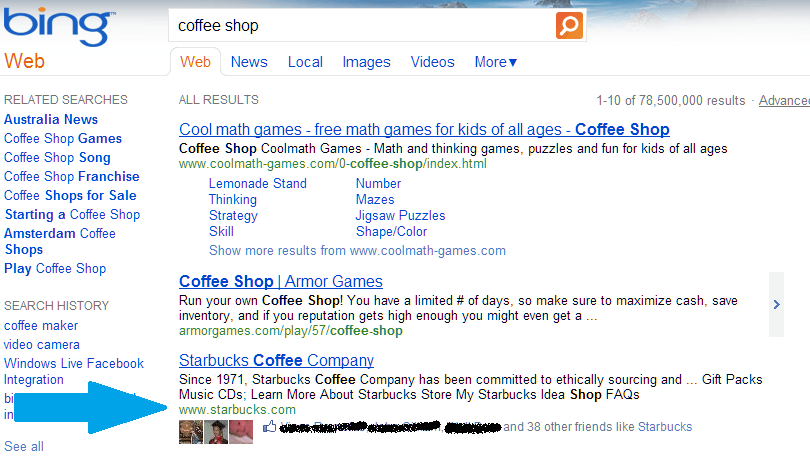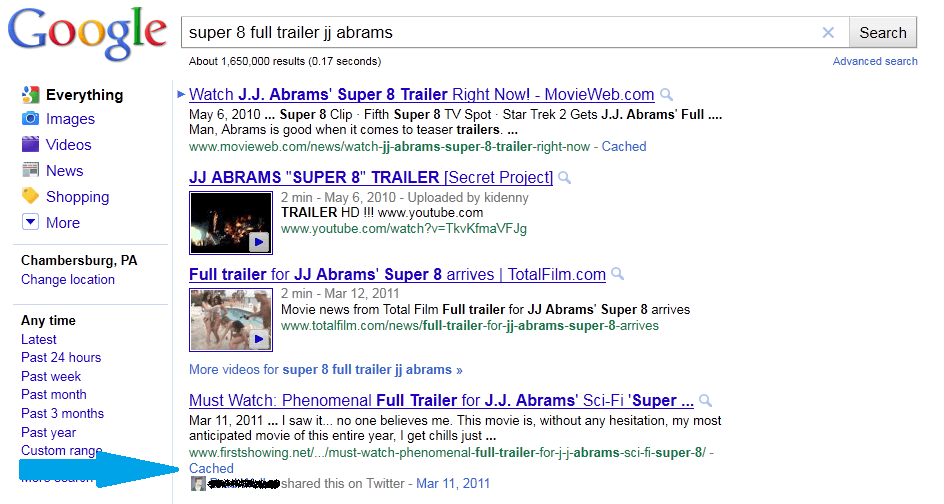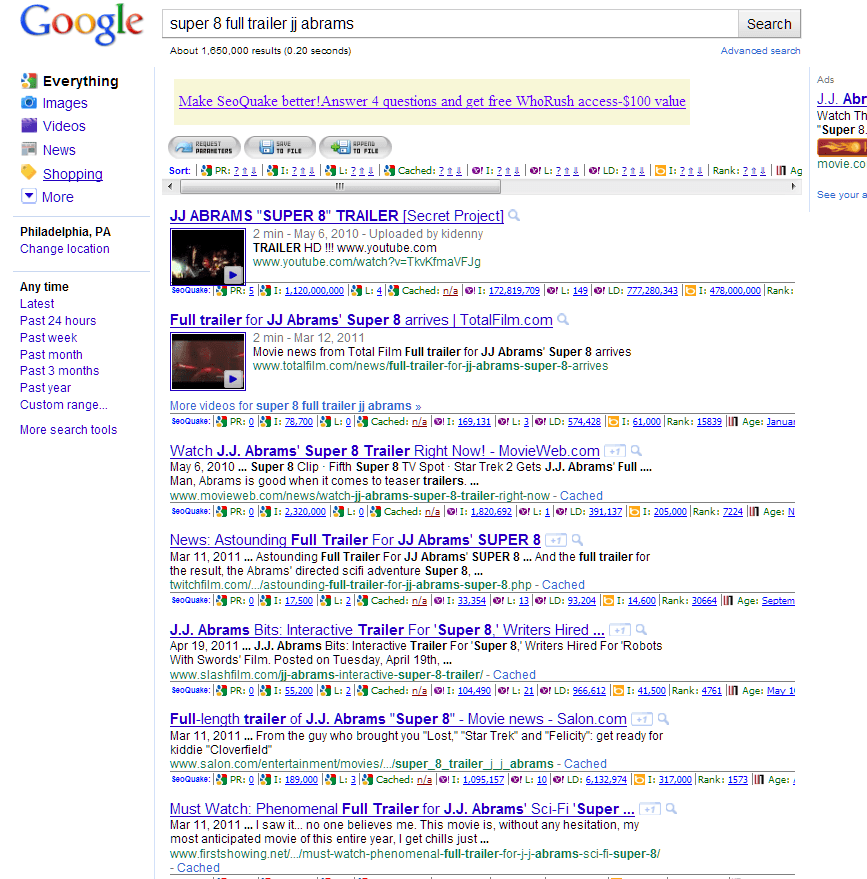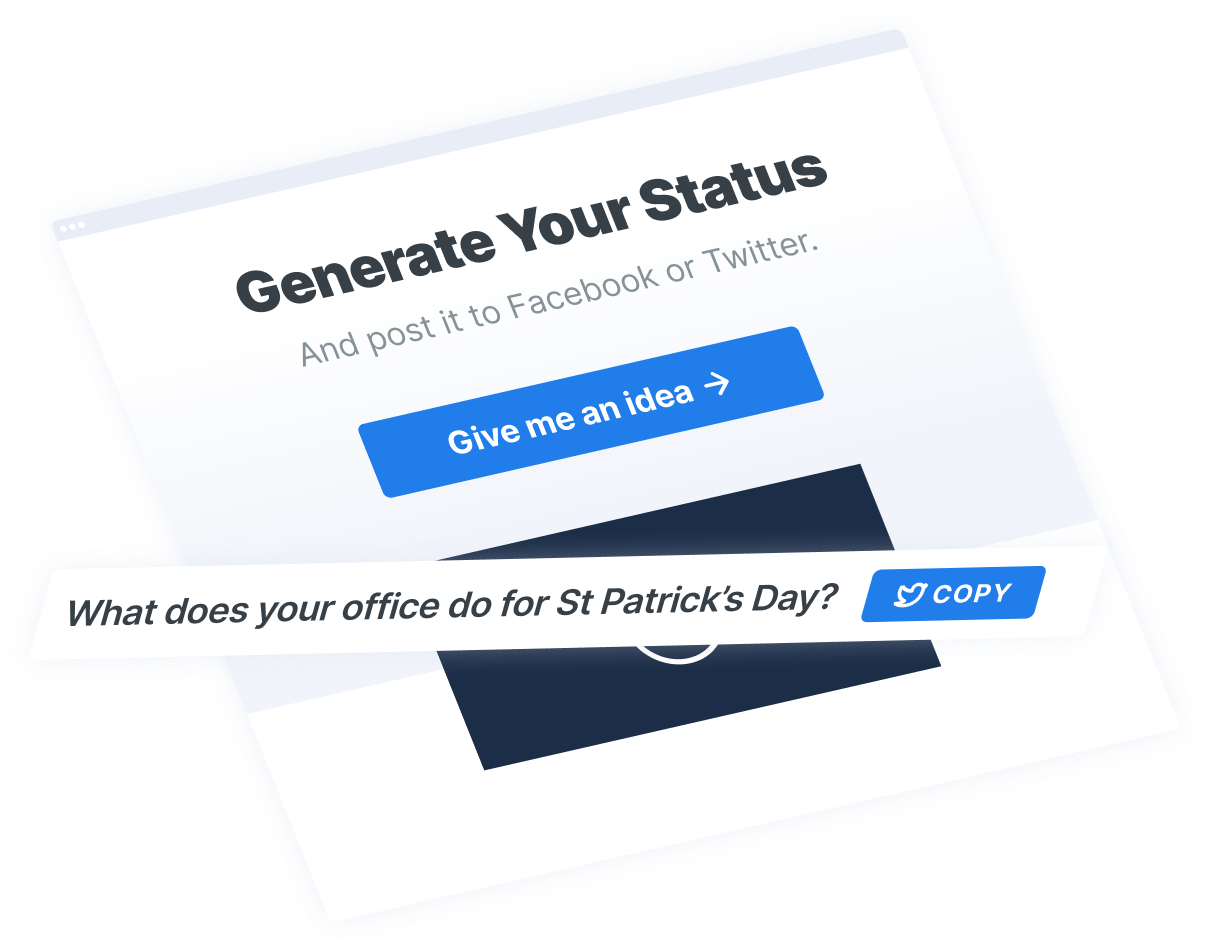- Home
- Blog
- Social Media 5 Reasons Why You Should Be Social
5 Reasons Why You Should Be Social
One of the most common questions I’ve been getting lately is “should I be on Facebook?”
Well, yes. But why stop there? You should be on Twitter too.
And while you’re at it … why not have a blog too? As an SEO, I’m a huge advocate for social for more reasons than one, but mainly because social is now being integrated into my true passion: search results. Not to mention, an integrated marketing strategy is what gets you places.
1. Filtered results options in Google Google Real-Time: Google real-time search elicits results based on concurrent updates.
As you search, Google is returning results happening at that exact moment. We’re talking live tweets (which coincidentally is another reason to be social). Now I don’t even have to be on Twitter to see the current trending topics.
Talk about up-to-date!
Blogs: Another search filter option in Google is Blogs. This allows users to search for just blogs and nothing else. So in order to ensure results in this filter, you must have a blog, and you must be updating it frequently, because Google gives precedence to those blogs that are most up-to-date, since that’s what users are typically looking for.
It should also be noted that the default search of “Everything” integrates blogs into the SERPs as well. So what benefit do you receive as a company? Presence in the search engines beyond the traditional results.
It’s simply not enough to be in the traditional results anymore. Times they are-a-changing; search results are ahead of the times, and you need to be too.
2. Just last week Bing announced an innovative solution to search. In a fairly new development, Bing is now integrating Facebook “Likes” into their search results.
Bing attributes this initiative to the “Friend Effect”. What is the Friend Effect? I like to refer to it as word-of-mouth marketing; you may have heard of it.
Bing’s thought process is this: when a user is at the beginning of the buying cycle, their initial action is going to be exploring user-feedback. Who uses your product? Do they like it?
Does it solve their problems? Does it work the way they thought it would? Did it exceed their expectations?
These are all questions we like to have answered before making a purchase, and as the product increases in price and value, the more questions we are likely to ask. So Bing thought, why not cut out a few days to several months of the buying cycle and answer these questions for the user immediately? By seeing those results your friends “like” (and clearly trust), you can be assured knowing your friend’s stamp of approval is on this particular brand, and you can trust it too.
Now you can skip filtering through an endless amount of review sites! So how does this work? Simple: Look for the “thumbs up”.
If you have lived anywhere other than under a rock, you know the symbol I’m referring to, and if you don’t, this post is for you. If you’re searching in Bing for say “coffee shop”, you can see how many of your friends “like” Starbucks on Facebook. This way, if I’m interested in knowing whether or not those closest to me trust the brand, I have this information available right at my fingertips during initial brand comparison.
Touché Bing.  3. Google and Social Accounts Connection Similar to Bing, Google also gives preferential treatment to what your friends recommend. So how does this one work? If you are signed in to your personal Google account with the same Gmail account you registered with for sites such as Twitter and Flickr, you can see what your friends have shared, and those videos, articles, etc.
3. Google and Social Accounts Connection Similar to Bing, Google also gives preferential treatment to what your friends recommend. So how does this one work? If you are signed in to your personal Google account with the same Gmail account you registered with for sites such as Twitter and Flickr, you can see what your friends have shared, and those videos, articles, etc.
your friends have shared are given preferential treatment in the results Google returns.
How can you apply this to your marketing strategy? If you have quality content users will want to share or “Retweet” for instance, Google will give your content more weight in the SERPs. See reason #4 for more information on the value of quality content.
As you can see below, when I’m signed in to my Google account, Google customizes my search results to what someone I follow on Twitter has shared. What’s cool about this is you don’t even have to be signed into Twitter, just Google.  In the preceding search, I was signed into my Google account.
In the preceding search, I was signed into my Google account.
In doing so, Google has ranked “Must Watch” much higher up than it would typically be ranking (as you can see below in the snapshot of the same search of which I am not signed into Google), simply because my friend on Twitter decided it was a link worth sharing. How cool is that?  4. The Power of Twitter and The Value of a Retweet This goes hand in hand with providing quality content that you hope will be shared and thus given preferential treatment in the search engines.
4. The Power of Twitter and The Value of a Retweet This goes hand in hand with providing quality content that you hope will be shared and thus given preferential treatment in the search engines.
The way to ensure this happens is quality content. The end goal in mind being the ‘retweet’: talk about viral. With the simple click of a ‘Retweet’ button, users who don’t even follow you are subject to your tweets by people they choose to follow, and we can safely assume, trust their opinion.
Word-of-mouth marketing (yet again) anyone? I thought so. Not to mention when you have a tweet that has been ‘retweeted’, you are more likely to appear in the Twitter search, and, if you’re lucky, perhaps even the coveted “Trending Topics”.
More visibility on the Internet? I’ll take it.
So how do you get users to ‘retweet’ your tweets? By writing compelling tweets.
And what’s more … the constant desire to compel users to hit the ‘retweet’ button forces you to be a better tweeter. And, speaking as an avid Tweeter, more high quality tweets make for a more high quality Twitter experience; one in which users will greatly appreciate.
5. Meeting customers where they’re at OK, so this one’s pretty obvious and it’s probably safe to assume you don’t need a whole lot of explanation, but whether it goes without saying or not, it’s a fact you simply can’t deny. Facebook statistics show there are more than 500 million active users, while the average user has 130 friends and over 700 billion minutes are spent PER MONTH on this social platform.
Twitter is following suit as users around the world begin to jump on the bandwagon. As if these statistics aren’t reason enough, you’re also meeting customers where they’re at in the search engines (you simply can’t deny your customers are using these) thanks to social integration; and this is accomplished simply by incorporating the social factor into your overall Internet marketing strategy. But, if you’re still not convinced from an SEO standpoint, at least recognize the value of dialoguing with your customers.
The significance of a search marketing campaign is simply undeniable in today’s market, and now social can act as a support system to your overall Internet marketing strategy. Social is here to stay; so basically I can sum this post up into one last ‘ground-breaking’ thought: if you’re not being social, you are missing out on the conversation.
-

WebFX is a full-service marketing agency with 1,100+ client reviews and a 4.9-star rating on Clutch! Find out how our expert team and revenue-accelerating tech can drive results for you! Learn more
Twitter and Facebook Status Generator
Finding engaging social media content for your business can be difficult. Use our tool to quickly find ideas and post directly to your page.
Give Me an Idea

Social Media Cost Calculator
Use our free tool to get a free, instant quote in under 60 seconds.
View Social Media CalculatorTwitter and Facebook Status Generator
Finding engaging social media content for your business can be difficult. Use our tool to quickly find ideas and post directly to your page.
Give Me an Idea




